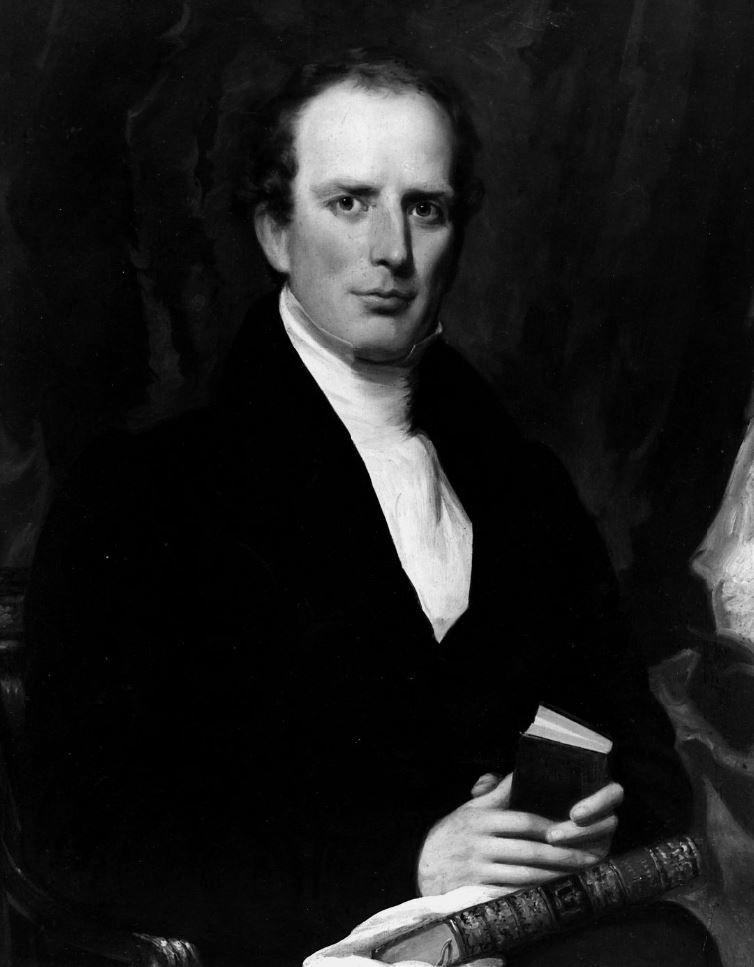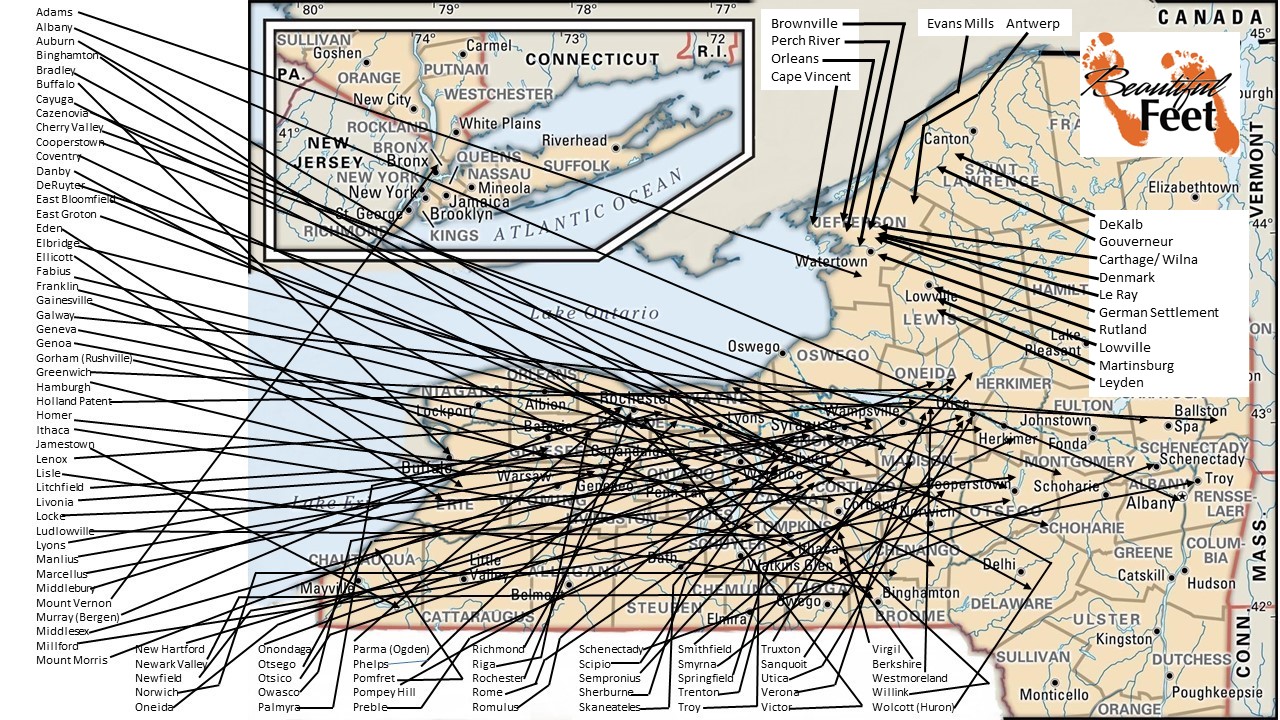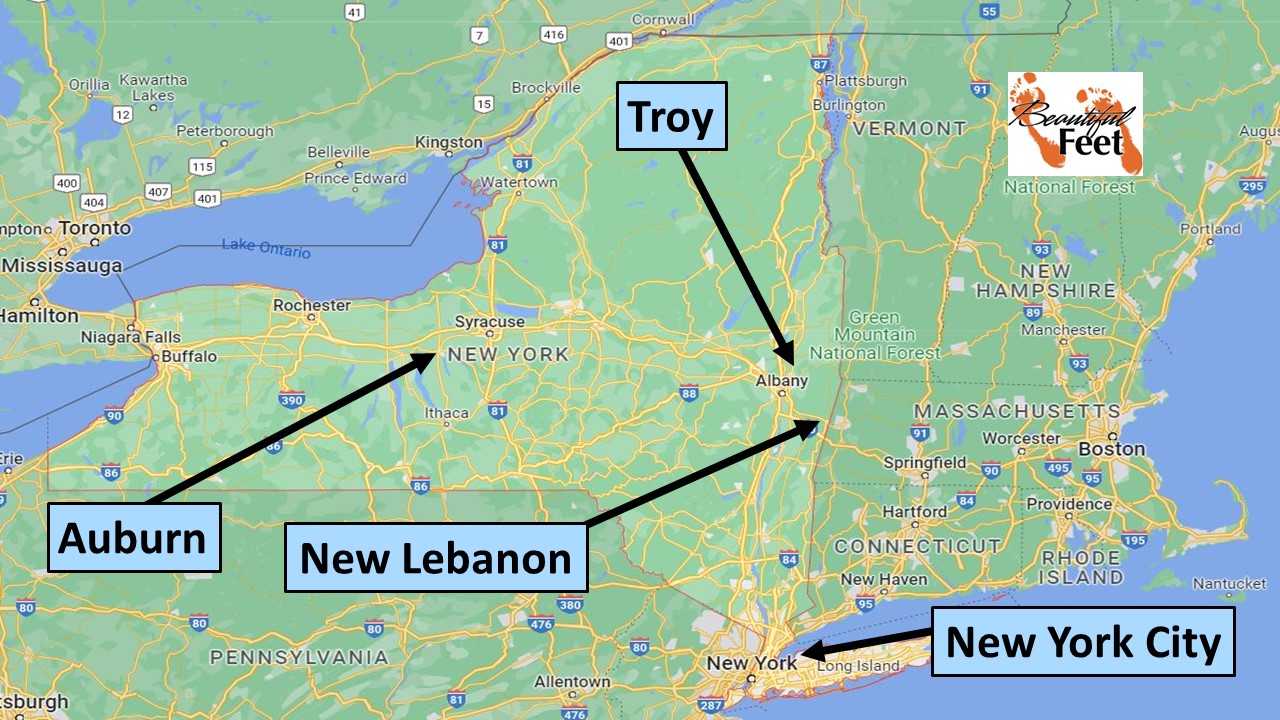


Charles Grandison Finney – Father of modern revivalism and the leading figure of the Second Great Awakening
Introduction
Charles G. Finney’s (1792-1875) unique methods of evangelism earned him the title of the “father of modern revivalism.” His methods paved the way for other mass-evangelists, like Dwight L. Moody, R. A. Torrey, John W. Chapman, Billy Sunday, and Billy Graham, who adapted and built upon Finney’s methods.
Background Information
With this revival account being one in a sequence of revivals during the life of Charles G. Finney, we recommend first reading our accounts of the initial revivals he was involved with in the northern and central part of New York State:
► 1824 Evans Mills German Settlement Revival
► 1824 Antwerp, New York Revival
► 1824 Revival at Perch River and Other Locations
► 1825 Revival in Gouverneur, New York
► 1825 Revival in De Kalb, New York
► 1825 Revival in Western, New York
► 1825 Revival in Rome, New York
► 1826 Revival in Utica, New York
► 1826 Revival in Auburn, New York

State of New York: The black lines indicate locations where revival spread during the 1820s and 1830s. The area became known as the “Burned-Over District.”
From Auburn to Troy
From the summer and fall of 1826, Charles G. Finney had been conducting revival services in and around the town of Auburn, New York. The Rev. Nathan Beman, pastor of the First Presbyterian Church in Troy, New York, who had been experiencing a revival in his church since January 1826 with the conversion of nearly 30 people, wrote to Finney in June that year, inviting him to come and hold meetings at his church.
The First Presbyterian Church in Troy was the wealthiest and largest in the area, with a membership of 1,200 at the time. The 30 new converts were also actively stoking the fires of revival.
In time, Finney agreed to Beman’s invitation, and began ministering in Troy on October 1, 1826. He stayed there ministering till April of 1827.

Rev. Nathan Beman, pastor of the First Presbyterian Church
in Troy, New York
Opposition to the Revival
The buildup of the opposition to Finney’s methods of conducting revival began about a year earlier, so it wasn’t only something that originated in Troy.
This opposition was more of a fermenting conflict within the Presbyterian denomination about theological issues (reinterpretation of Calvinism), modern methods of promoting revivals, and even slavery (Old School-New School Controversy).
The Presbyterian denomination spent 6 weeks laying charges against the Rev. Beman, examining him as if he were on trial, requiring his full-time effort in defending himself. But all the while, in the church which Beman was pastoring, First Presbyterian Church of Troy, Finney said that:
I went on in my labors in the revival. Christian people continued praying mightily to God. I kept up preaching and praying incessantly, and the revival went on with increasing power.
Extraordinary Prayer
Similar to other revivals Finney was part of, there was “a very earnest Spirit of prayer that preceded it.”
Prayer was held in small groups in different homes around the town at 11 a.m. every day. At one of those meetings there was present a Mr. Stowe, a cashier at a bank in Troy. During one of the prayer meetings he was so overcome by the compulsiveness to pray, that when the meeting came to an end, he couldn’t stop, but remained kneeling, “and writhed and groaned in agony. And he called out and said: ‘Pray for Mr.–,’ ” who was president of the bank in which he worked cashier.
Seeing the agony of travail Mr. Stowe was demonstrating for the soul of that banker, the others united with him in prayer for that man’s salvation. It wasn’t long after that intense prayer meeting that that president made a profession of his faith in Christ.

The revival in Auburn preceded the one in Troy and New Lebanon
New Convert Turns Evangelist
Miss. Sarah Seward, a young lady from a highly influential family in New Lebanon, New York, came to Troy to purchase a dress for a ball (dancing was considered highly sinful at that time). While in Troy, she was with a cousin of hers who was a recent convert. That cousin invited Seward to the revival meetings with her. During the sermon Seward became very agitated and angry, yet due to her cousin’s request, she kept going back night after night. Soon Seward herself was converted and became a powerful evangelist in New Lebanon.
When Seward returned home, she immediately began her evangelistic work. The older church members in New Lebanon at that time were mostly cold and indifferent to spiritual things, and hardly any of the young people were followers of Jesus.
Seward had a special place in her father’s heart, and she influenced him to turn from his cold, dead religious ways, and in a short period of time he was converted to Christ.
Seward then went to the pastor’s home and led that pastor’s daughter to Christ, and then the two of them began their work, going house to house, stirring up the people with a renewed desire for God.
After about two weeks of this evangelistic work, there was so much renewed interest that Seward, having the encouragement of her pastor and members of her church, went to Troy, begging Finney to come and hold some meetings in their town. Finney agreed to the request, and about his initial efforts in New Lebanon he said:
The Spirit of the Lord was poured out, and the revival soon went forward with great power. Very interesting incidents occurred almost every day. Powerful conversions were multiplied and a great and blessed change came over the religious aspect of the whole place. The most cultivated and influential of the inhabitants were converted.
Called into the Ministry
John Thomas Avery (1810-1896), who was 15 or 16 years of age at the time, was present in Finney’s meetings. This young man approached Finney and said,
I was completely rolled up in the sermon, and it carried me right along. I could understand it. I gave up; I gave all to Christ.
That young man went on to become a very powerful evangelist in western New York State. There were so many such conversion testimonies similar to Avery’s that it would take volumes to document them all.
Prophetic Assurance of God’s Protection
During the Auburn, New York, Revival, Finney received a powerful vision in which God assured him that he would be victorious over all opponents of revival, without him having to say one word in his defense.
Having that divine assurance, Finney was able to read all the attacks that came against him in letters or other publications, and continue to retain a heart full of love and faith through all his revival efforts.
Results of the Revival in Troy
► There were meetings held for new converts each week, with numbers attending these meetings reaching between 20-160.
► Though the numbers converted cannot be verified, it is estimated that “many hundred were truly converted to God.”
► The revival swept through the Troy Female Seminary. A pioneer of women’s rights, Elizabeth Cady Stanton, who was 16 at the time, said that it went through the seminary “like an epidemic.” She said that she was “one of the first victims.”
Finney Revival Account List
Access all accounts of Finney’s revivals using this link.
Primary Sources
► Chapter XVI Revival at Troy: The Memoirs of Charles G. Finney by Charles G. Finney
► Nathan S.S. Beman by archives.rpi.edu
► The Memoirs of Charles G. Finney: The Complete Restored Text by Charles G. Finney
Secondary Sources
► Charles G. Finney by Wikipedia
► Charles Grandison Finney & the Second Phase of the Second Great Awakening by Christian History Institute
► Eerdman’s Handbook to Christianity in America by Mark A. Noll
► Fire From Heaven by Robert Evans
► Great Revivals and the Great Republic by Warren Candler
► Man of Like Passions: The Life Story of Charles Grandison Finney by Richard E. Day
► Memoirs of Revivals of Religion by Charles G. Finney
► Memoir of the Life and Character of Rev. Asahel Nettleton by Bennet Tyler
► New England Revivals by Bennet Tyler
Return to List of Revival Stories
Chet & Phyllis Swearingen:
Office: (260) 920-8248
romans1015@outlook.com
Beautiful Feet
P.O. Box 915
Auburn, IN 46706

